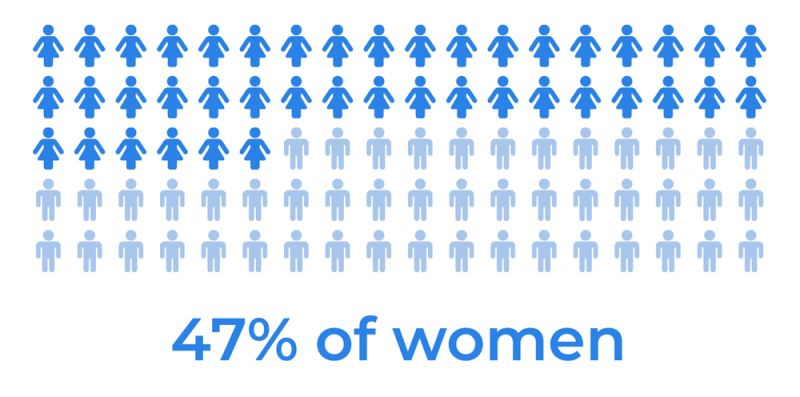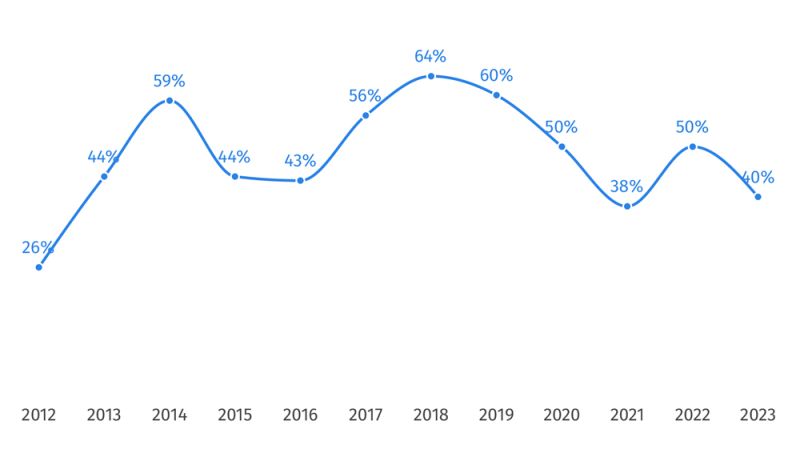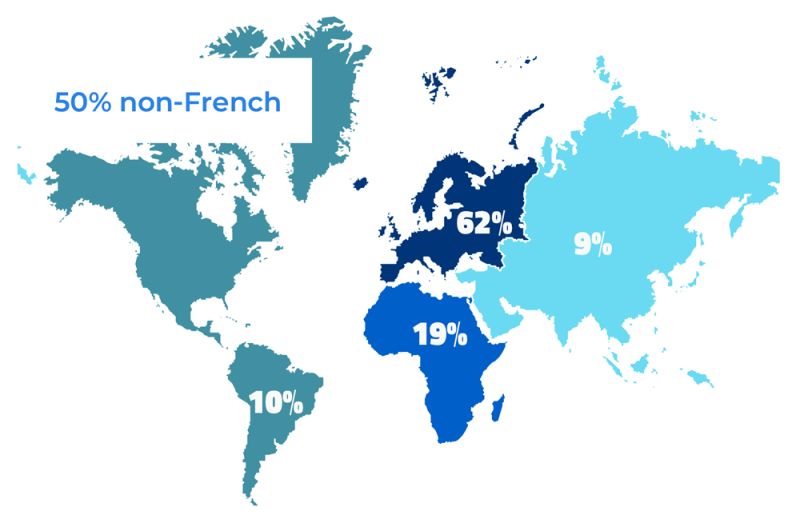The AMSE PhD program was officially launched in 2012, shortly after the birth of Aix-Marseille University, when AMSE was created to unite researchers in economics from four research centers (GREQAM, DEFI, CEA, SESSTIM). The program was built on the existing GREQAM program.
This column provides an outline of the program as it stands after (about) 10 years and describes some of the main changes it has undergone. It also gives us the opportunity to answer some frequently asked questions about the program. Note: Figures presented here only concern the “classic” PhD track.
OVERALL PROGRAM STATISTICS
155 PhD candidates. In total, there have been155 PhD candidates on the AMSE PhD program since 2012. With an average of 11 new enrollees each year, the program currently hosts 46 PhD candidates.
DURATION AND TIMING
4 years. The average time taken to defend a PhD dissertation is 4 academic years and 1 month, with about half of the final defenses taking place in May and June, and half between November and December.
DEMOGRAPHICS OF PHD CANDIDATES
25 years old. The average age of PhD candidates at entry is 25 years and 5 months (standard deviation from this average is 2 years).
Two thirds locals. On average, AMSE masterlevel graduates account for 64% of AMSE PhD candidates. The proportion in given years can be high (100% of 2017 entry cohort) or low (50% of 2019 entry cohort), depending on the relative size and quality of the internal applicant pool, as well as on externally available funding opportunities. 31% of PhD candidates hold a master from other French institutions, and only 5% from a foreign institution.
50% women. In 2012, only 26% of the initial cohort of AMSE PhD candidates were women. They now account for about half of PhD candidates and represent 50.3% of PhD candidates admitted to the program in the 2018-2023 period.
50% non-French. On average, half the entry cohorts are French nationals, with highs and lows in given years: from 25% in 2021 to 62% in 2020, for example. In total, the program has hosted PhD candidates of 33 different nationalities since 2012. All continents except Oceania are represented (Europe, excluding France: 12%; Asia: 9%; Africa: 19%; North and South Americas: 10%).
FUNDING AND TEACHING OPPORTUNITIES
100% fully funded. Since 2015, all PhD candidates admitted to the AMSE PhD program have received full-time research funding. The largest sources of PhD funding are Aix-Marseille University grants (67% of grants), grants directly awarded by AMSE (13%), and industrial partnerships (CIFRE, 9%). About two thirds (60%) of PhD candidates teach during their first three years in the PhD program.
5% interruption rate. Only 1 out of 20 PhDs are interrupted. Half of these interruptions are the result of re-orientation decided by candidates.
BUDGET GROWTH AND EXPENDITURE
120K€. The yearly operating budget of the AMSE PhD program has grown from 57K€ in 2013 to 174K€ in 2022. Using the French consumer price index to account for inflation, this corresponds to a 172% increase in real terms since the start of the program. Excluding years 2020 and 2021, The AMSE PhD program was officially launched in 2012, shortly after the birth of Aix-Marseille University, when AMSE was created to unite researchers in economics from four research centers (GREQAM, DEFI, CEA, SESSTIM). The program was built on the existing GREQAM program. This column provides an outline of the program as it stands after (about) 10 years and describes some of the main changes it has undergone. It also gives us the opportunity to answer some frequently asked questions about the program. Note: Figures presented here only concern the “classic” PhD track. Newsletter 17 when activities were deeply affected by the COVID-19 pandemics, AMSE spent on average 120K€ per year (in current euros) to support the research activities of PhD candidates. Research visits abroad and attendance at conferences and workshops each represent one third of this amount. The next largest expenditure is on access to data, which represents 12% of the total budget.
POST-PHD CAREERS
59% abroad, 41% in France. Close to two thirds of AMSE PhD graduates pursue their career outside France, as opposed to only 45% ten years ago. The first positions of both French and non-French graduates are evenly distributed between France and abroad.
61% in academia, 25% in institutions, 14% in industry. While about 75% of AMSE graduates began their career in academia priori to 2015, the rate is now 61%. More than one third of graduates’ first positions are in institutions or in industry.
VISITING PHD CANDIDATES
9 + 3 visiting PhD candidates. A program of one-year grants was launched in 2012 to host PhD candidates about to finish their PhD in other institutions. While this program was interrupted for several years, 28 PhD candidates have so far taken part in it, and we currently welcome about 3 candidates each year. A formal program was launched in 2018 to host visiting PhD candidates for shorter periods. Excluding 2020 and 2021, during which research visits were severely limited by the Covid-19 crisis, 9 students were hosted each year on average. In total, we have welcomed 41 foreign PhD candidates from 17 different home universities (located in 12 countries) since 2018.
SUPERVISION TRENDS
74% joint supervision. Today, close to three quarters of AMSE PhD candidates are cosupervised by two faculty members, as against only 35% in 2012-2014. The 46 currently enrolled PhD candidates are supervised by 47 faculty members, each responsible on average for 1.7 PhD candidates.
Share of women by starting cohort, since 2012


Origins of PhD candidates, since 2012

→ This article was issued in AMSE Newletter, Winter 2023.